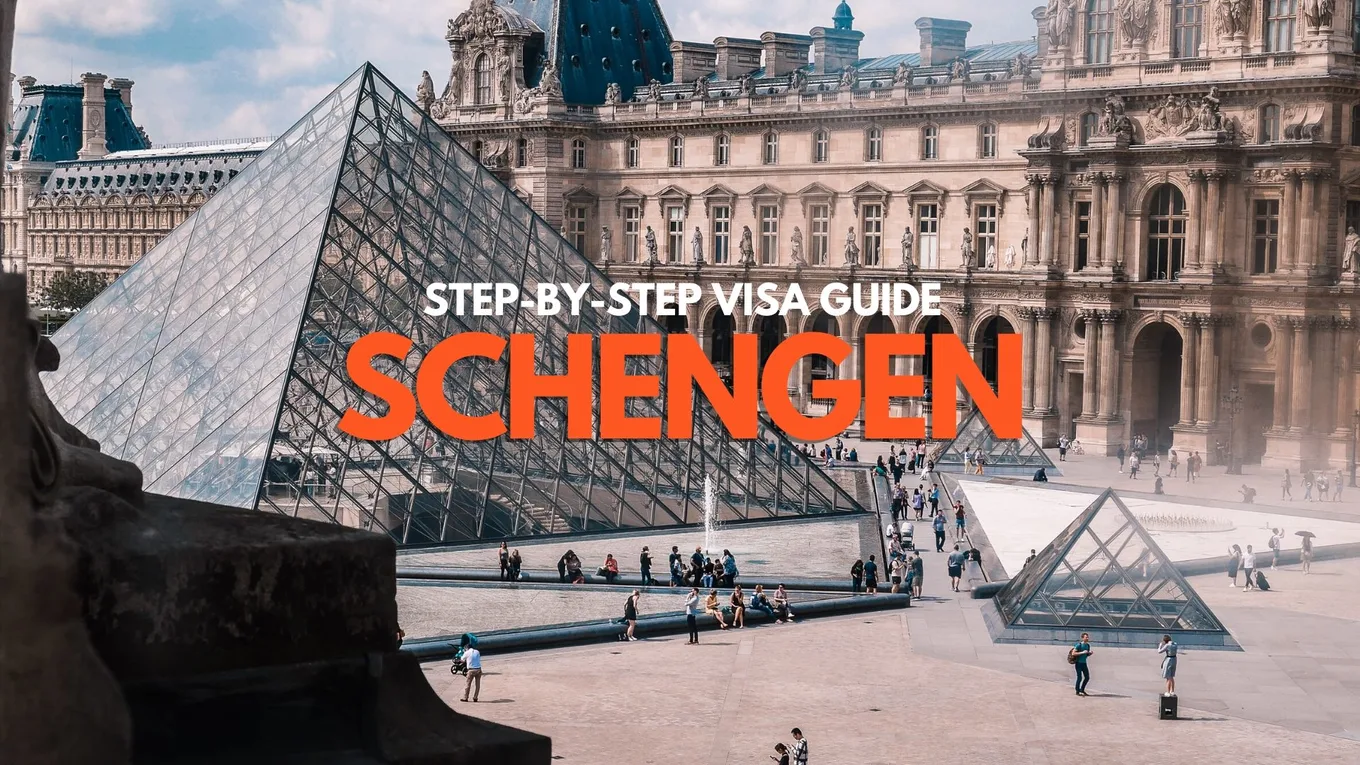THE FIRST STEP TO GETTING YOUR SCHENGEN VISA!
Everyone dreams of visiting Europe even once in their lifetime, but unfortunately for us Filipinos, the visa process is tedious and quite the expense. However, this should not stop you from living out your European dreams! That said, we break down the application process and fill you in on what you need to know! Check it out.
NOTE: There are various types of Schengen Visas, as it will depend on the country you choose to submit your application. For this visa guide, we will focus primarily on tourist visas or short-stay visas. The application process for a work, student, or sponsored visa (to name a few) will differ.
New to Klook? Sign up now!
Conveniently travel around Europe with Klook’s Eurail Country Passes:
WHAT IS A SCHENGEN VISA?
The Schengen Visa covers all 26 countries and member states of the Schengen Area in Europe as listed: Austria, Belgium, Czech Republic, Denmark, Estonia, Finland, France, Germany, Greece, Hungary, Iceland, Italy, Latvia, Liechtenstein, Lituania, Luxembourg, Malta, Netherlands, Norway, Poland, Portugal, Slovakia, Slovenia, Spain, Sweden, and Switzerland.
Philippine passport holders are required to obtain a Schengen Visa upon entering Europe (Schengen Area) as a temporary visitor. Typically, approved applicants are given up to 90 days to travel within 180 days, however this would still depend on the visa the consulate will grant you. The Schengen visa type in discussion will focus on tourist or short-stay visas only.
Obtaining a Schengen Visa from any country listed above will allow entry to any Schengen border (countries listed above); however this does not permit entry to some European countries such as the United Kingdom.
WHERE SHOULD I APPLY FOR A SCHENGEN VISA?
You can apply for a Schengen Visa at the embassy, representative branch, or third-party branch of any of the 26 countries listed above. However it is HIGHLY RECOMMENDED to:
(a) Apply at the embassy/representative branch/third-party branch of the country that you are visiting first, or
(b) Apply at the embassy/representative branch/third-party branch of the country that you are spending the most number of days in
Sample Route: France (3 days) → Italy (3 days) → Spain (5 days)
QUESTION: Which embassy do I apply for a Schengen Visa in?
ANSWER: Either France (through VFS Global) since it is your country of entry; or Spain (through BLS International) as you are spending the most number of days here.
WHEN SHOULD I APPLY FOR A SCHENGEN VISA?
Most embassies allow applicants to start filing their Schengen Visa applications and appointments as early as 3 months before their intended travel date. However, there are several embassies that allow applicants to apply as early as 6 months before – such as Spain. Best to check with the embassy and apply as soon as possible!
WHEN CAN I EXPECT MY SCHENGEN VISA TO BE RELEASED?
Release of Schengen visas will vary per embassy. Some embassies have a shorter processing time than others and can even take as long as 20 business days. In the event of national holidays or calamities, processing will naturally take longer as expected. This is why applying for a Schengen visa – no matter what embassy – should be done as soon as possible.
PRIMARY REQUIREMENTS FOR SCHENGEN VISA:
NOTE: Schengen Visa requirements may vary for each embassy; however most if not all are required to submit the primary requirements listed below. Check the respective embassy website for any additional requirements.
- Valid Passport
- Old Passports + Photocopies of Travel Documents • Passports, previous visas, passport stamps
- Application Form • Respective forms for the country you are applying in can be found on their embassy website or on third-party branches such as VFS Global, VIA, and BLS International
- Recent Photo ID • ID sizes may vary embassy-to-embassy
- Proof of Accommodation • Provide address, contact details and a letter from your host if you are staying with a resident in EU; or • Book a cancellable accommodation on Klook Hotels; be sure to check their cancellation policies.
- Flight Reservation • You don’t need to purchase flights before getting your visa, however, you can reserve seats on a flight through travel agencies; typically for a small fee.
- Proof of Employment • Income Tax Report, Certificate of Employment for employed individuals • Business Registration documents and permits for self-employed individuals
- Proof of Financial Means • Bank Statements (within 6 mos), Bank Certificates (within 6 mos), Land Titles • For those who are not paying for their travels: submit an affidavit and financial documents of your sponsor
- Travel Insurance • You can get travel insurance through various travel agencies, accredited insurance companies and sometimes through airlines you’ve booked with
- Detailed Itinerary • Create a short document of what you plan to do day-to-day in Europe • Include addresses, accommodation contact information, companies/agencies you’re touring with, and any cross-border travels
- Schengen Visa Application Fee • UPDATE: (As of 2 Feb 2020) The cost for an (ADULT) Schengen Visa Application is €80 (Php 4,500-Php5,000). • If you are paying at the embassy, bring the exact amount.
- Cover Letter (addressed to the consul) • Though not required, it is best to still have one just in case. To be given along with the rest of your Schengen visa requirements. • Indicate: Total number of travel days, destinations you’ll be visiting and the respective dates, purpose of travel, previous travels, and your detailed itinerary
- Medical Insurance (as of 5 Feb 2020) • Health or medical insurance can be provided by travel agencies and accredited insurance companies.
WHAT’S THE SCHENGEN VISA APPLICATION PROCESS?
Here we’ll discuss the application process through VFS Global, a well-trusted third-party branch that covers Schengen visas for the following countries: Austria, Belgium, Czech Republic, Denmark, Finland, France, Germany, Hungary, Malta, Norway, Sweden, Switzerland, the Netherlands, Luxembourg, Slovenia, Poland, and Latvia.
If the country you intend to get a Schengen Visa is not listed above, a list for additional third-party branches and embassies are listed below.
1. Select the destination you intend to get a Schengen visa from (through VFS Global)
VFS Global’s homepage will immediately ask you to indicate the destination you are to apply for/where you’re headed. Be sure to indicate either one of the two: (1) Country of entry or (2) Country with the longest number of travel days.
2. Identify your visa type and apply
Each country will vary in available visa types. For tourists, the visa code is typically listed under ‘tourist visa, visitor visa, temporary visit visit, tourism visa’.
3. Put together the requirements for your visa application
Again, the country you are applying for may have an additional set of Schengen visa requirements. If you are applying via VFS Global and select the country you intend to apply for, you will most likely be redirected to their requirements list.
4. Accomplish the online application (redirected from VFS Global)
Every online application will be different. If you are applying for a Schengen Visa to any of the countries mentioned above through VFS Global, you will need to dictate.
Take note: you only have to apply for one Schengen visa. It is recommended to fulfil an application for the country that you are visiting first/entering or spending the longest number of days in.
5. Book an appointment slot
After you’ve filled out your online application, book your appointment slot through VFS Global. Take note: Some countries allow applicants to apply at least 6 months before or 3 months before the intended travel date.
6. Pay the application fees
Once you’ve finalized a date for your appointment, you will be asked to pay an application fee to reserve your slot.
UPDATE: As of 2 Feb 2020, the application fee for a Schengen Visa (Adult) costs EUR80; Schengen Visa (Child 6-12 Y.O.) EUR40. This fee will not be returned if the visa has been denied.
7. Attend your appointment/interview
Though most countries under VFS no longer require applicants to come in for an interview, there are several countries that go through this method.
Whether you’re going in for an appointment or an interview, be sure to have all your original requirements and supplementary documents PLUS a photocopied set with you.
For VFS applicants, these appointments are typically for biometrics and photo-taking.
Valuables will be confiscated upon entering the VFS branch. Otherwise, you will have to surrender and place them in a paid locker, so best just to arrive with just your requirements.
IMPORTANT: Be at the third-party branch AT LEAST 15-30 minutes before your appointment. Personnel will start to let applicants inside during this time.
Bring with you exact cash for the delivery of your passport and visa. Credit cards are not accepted and change is often not provided. The additional services are as follows:
• Courier Service: PHP 330
• Photocopy Service: PHP50
• Photograph Service: PHP150
• SMS Service: PHP110
8. Track your application
The wait is the most agonizing bit! The processing and duration of your Schengen visa will depend on the country you apply for. If you are on a tight schedule, be sure to apply ASAP as it may take as long as 20 business days.
EMBASSIES AND THIRD-PARTY BRANCHES TO APPLY IN
VFS Global – Click through to be redirected!
VIA (Visa Information and Application Centre)
BLS International
Embassies
- Greece – The Greek Embassy in the Philippines






















